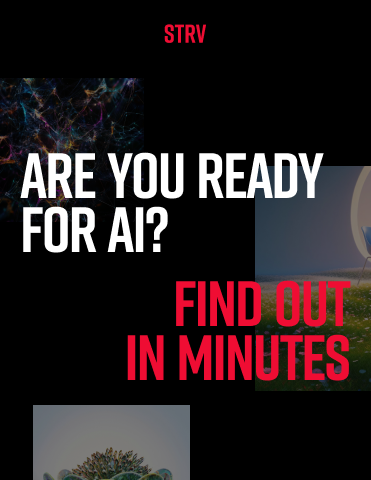Protecting supply chains

Joe Depeau at Neo4j explains how structured data is shaping the future of resilient supply chains
The digitalisation of supply chains has ushered in transformative changes for the industry. On one hand, there have been more opportunities for innovation and to become more efficient, while on the other, increasing interconnectedness has left supply chains exposed to new vulnerabilities. The latter leaves both the physical and digital systems in the global supply chain more susceptible to disruptions.
Cyber-security threats are a pertinent example of how the stability of supply chains is under fire. In November 2024, hackers executed a ransomware attack against Blue Yonder, a supply chain management specialist, and breached the company’s managed services environment. This caused major delays to a number of UK grocery and retail stores, making it difficult for retailers to manage staff payments and schedules, underscoring the severe disruptions such incidents can cause.
There is an evident necessity to proactively plan for various scenarios to avert crises. If plans to mitigate potential impacts are not mapped out in advance, these events have the potential to completely halt production and impact business revenues. The efficiency and efficacy of how supply chains run fundamentally rely on how its data is used, but without sufficient safeguarding or optimisation of that data – to circumvent real-world disruptions – they remain vulnerable to setbacks.
In light of this, many businesses are adopting advanced technologies and initiatives to enhance resilience throughout their supply chains.
Supply chain data complexities
The inherent complexity of supply chains comes as no surprise, given the web of producers, warehouses, transport, distribution ports, and stores around the world. Any single disruption within this network can trigger a chain reaction throughout the entire system, making visibility critical to preventing subsequent failures.
Nevertheless, deriving meaningful insights from raw supply chain data presents its own set of challenges. Composed of rigid structures of tables, rows, and columns, traditional data models struggle to effectively capture the intricate relationships between data sets. As a result, the ability to extract valuable data insights that could inform a response to disruptions becomes significantly limited.
Interconnected networks
Addressing these challenges, graph databases emerge as an innovative solution. While traditional models embrace a structure that grapples with analysing complex relationships, graph databases are uniquely structured using ‘nodes’ and ‘edges’ that capture those important nuances.
In this model, ‘nodes’ represent entities, like people, products, or locations, while ‘edges’ represent the relationship between two nodes – i.e., how they are connected to one another. These fundamental properties are invaluable for supply chain professionals looking to visualise their supply chain as the network that it is, in the digital form.
A practical use case of graph databases in action is transport optimisation. A supply chain organisation could, for instance, create nodes to represent each wholesaler and connected retailer. An edge could then be applied to highlight the distances between them. By running the appropriate query or request in the data model, the output should present the analyst with the ‘best’ – fastest and cheapest – supplier from which goods can be transported and ready for purchasing.
In the event of unexpected disruption, understanding the relationship between entities in the supply chain in advance can be of immense value. Consider the crisis in the Red Sea, for example, where shipping companies are facing rising shipping costs and delivery delays due to rebel attacks. Graph technology could allow those managing supply chains to source alternative routes or solutions, ensuring goods reach suppliers more efficiently, boosting resilience, and reducing disruption.
It’s those edges between entities that make graph database technology a powerful tool for uncovering valuable insights, utilising those links to map complex and telling relationships. While the rigid format of traditional data models makes uncovering relationships much harder, supply chains, operating as networked structures, are a more natural fit.
Digital twin technology
Beyond the physical realm, supply chain resilience also means mitigating disruption in the digital realm. Cyber-attacks, such as the incident at Blue Yonder, can vastly impact digital operations. Given this, businesses are exploring digital twin technology as a tool for proactively combatting these potential issues rather than reacting after a post-incident analysis.
Organisations are leveraging ‘knowledge graphs’ to create virtual replicas of their supply chains, enabling them to test various scenarios and predict multiple outcomes related to cyber-security risks.
This involves creating a connected, virtual model of their supply chain, which produces a holistic and granular view of how systems interact within the network. This network encompasses the users and the groups they belong to, and the permissions granted to each member. As recurring or interconnected events are continuously captured, the digital twin becomes increasingly accurate, empowering cyber-security and supply chain analysts to respond more swiftly and effectively in the present while shaping their future strategies.
By making these connections visible to cyber-security analysts, it becomes easier to identify the most critical vulnerabilities and the potential attack paths to those resources. Analysts can then assign probabilities to each pathway, enabling them to predict which attacks are most likely to succeed and reinforce security measures accordingly.
This knowledge is crucial because it clearly signposts when organisations need to explore alternative routes, reassess transit times, and evaluate the cost impacts. By integrating cyber-security modelling with supply chain optimisation, organisations can develop a robust strategy to stay proactive in the face of disruption and re-prioritise resources in quicker succession.
Resilience with graph databases
To thrive in an interconnected world, organisations should move beyond traditional data management methods. By harnessing the power of graph databases, businesses can gain new perspectives on their supply chains, uncover and prepare to tackle vulnerabilities, and develop proactive strategies to stay ahead of disruptions. This ability to navigate uncertainty with confidence and adaptability is what ultimately sets organisations apart.
Joe Depeau is Senior Engineer at Neo4j
Main image courtesy of iStockPhoto.com and gorodenkoff

Business Reporter Team
Related Articles
Most Viewed
Winston House, 3rd Floor, Units 306-309, 2-4 Dollis Park, London, N3 1HF
23-29 Hendon Lane, London, N3 1RT
020 8349 4363
© 2025, Lyonsdown Limited. Business Reporter® is a registered trademark of Lyonsdown Ltd. VAT registration number: 830519543





